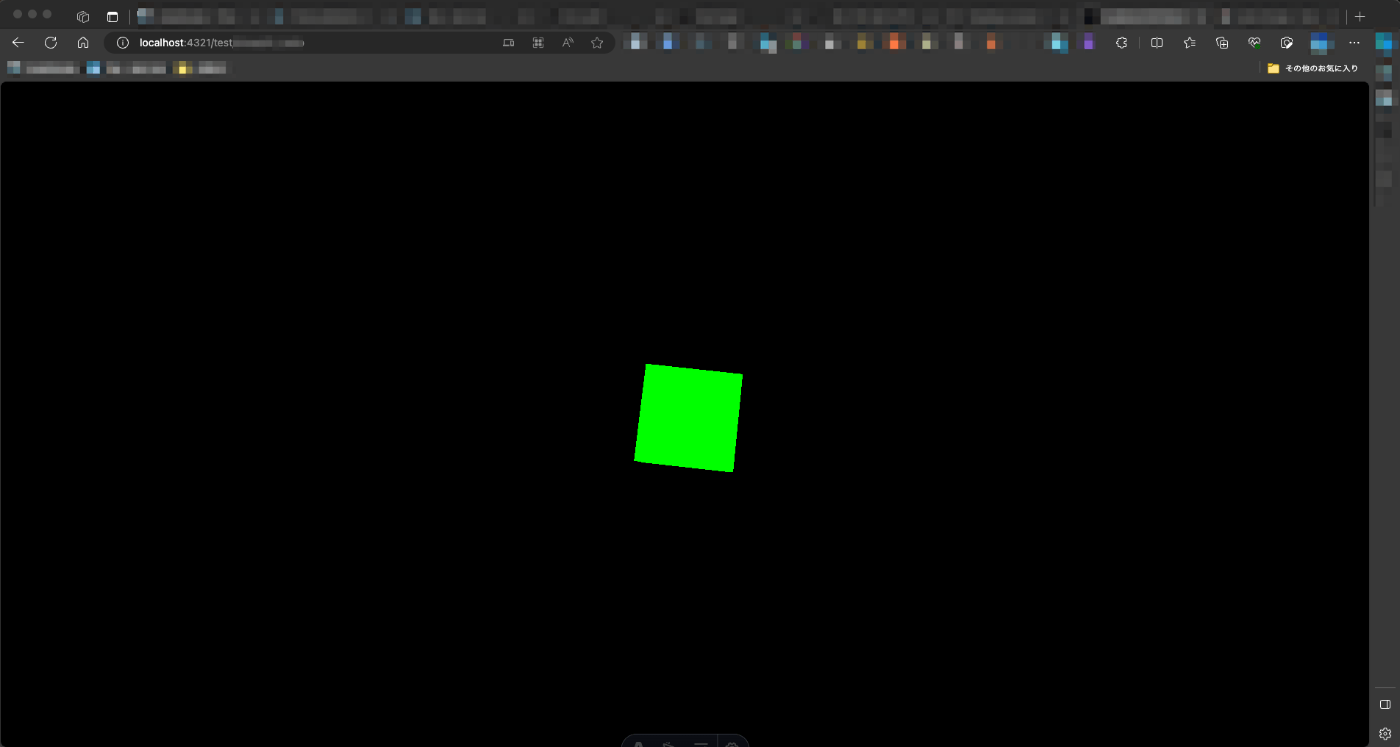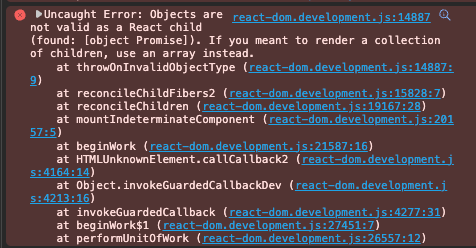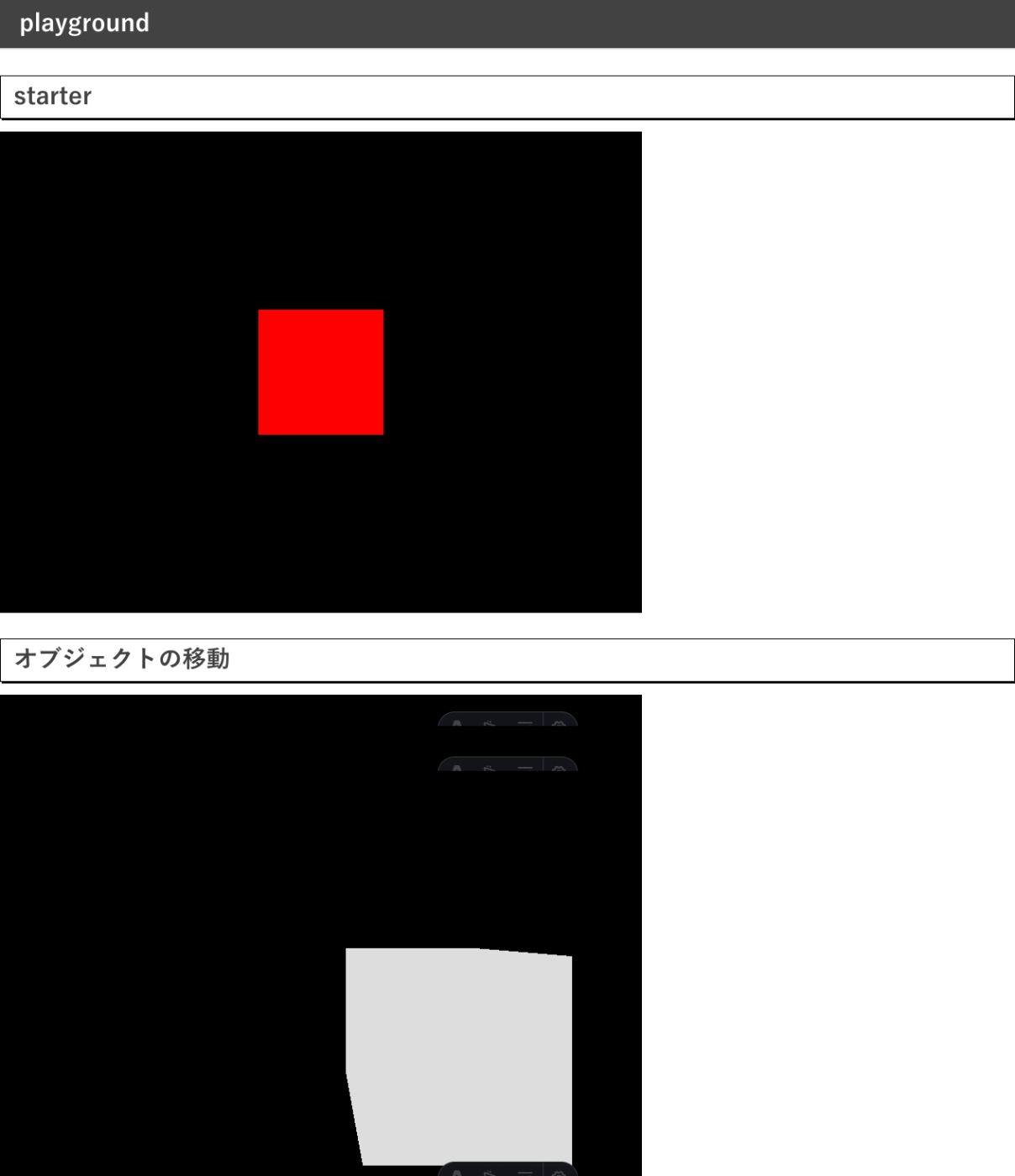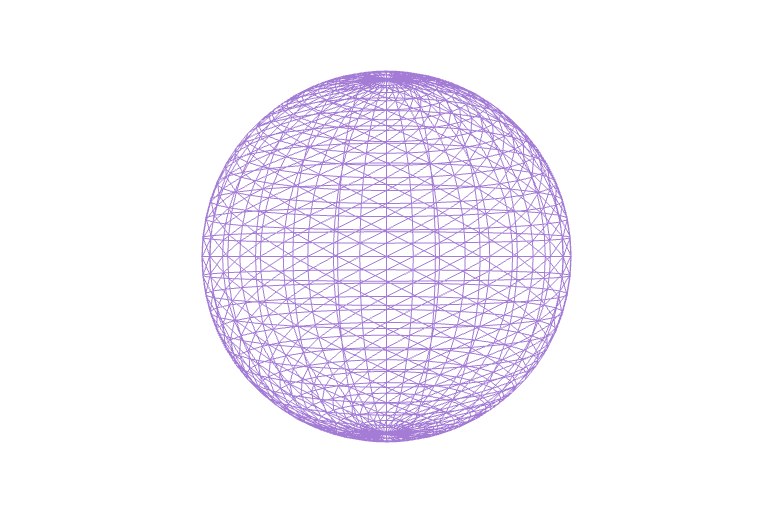astroでthree.jsを動かす方法
検索しても出てこなかったので。
Reactを使います(React Three Fiberは後述)
astroにReactをインストール
ドキュメントを見るとReactをインストールする方法は自動と手動の2つあって、今回は自動で行います。手動だと、reactをブラウザで解釈するためのreact/domというライブラリを入れたり、コンフィグいじったりしなければならないですが、自動だと全部よろしくやってくれます。
npx astro add react
✔ Resolving packages...
Astro will run the following command:
If you skip this step, you can always run it yourself later
╭────────────────────────────────────────────────────────────╮
│ npm install @astrojs/react@^3.0.9 @types/react@^18.2.46 │
│ @types/react-dom@^18.2.18 react@^18.2.0 react-dom@^18.2.0 │
╰────────────────────────────────────────────────────────────╯
✔ Continue? … yes
✔ Installing dependencies...
Astro will make the following changes to your config file:
╭ astro.config.mjs ─────────────────────────────╮
│ import { defineConfig } from 'astro/config'; │
│ │
│ import react from "@astrojs/react"; │
│ │
│ // https://astro.build/config │
│ export default defineConfig({ │
│ integrations: [react()] │
│ }); │
╰───────────────────────────────────────────────╯
✔ Continue? … yes
success Added the following integration to your project:
- @astrojs/react
Astro will make the following changes to your tsconfig.json:
╭ tsconfig.json ──────────────────────────╮
│ { │
│ "extends": "astro/tsconfigs/strict", │
│ "compilerOptions": { │
│ "jsx": "react-jsx", │
│ "jsxImportSource": "react" │
│ } │
│ } │
╰─────────────────────────────────────────╯
✔ Continue? … yes
success Successfully updated TypeScript settings
Reactファイルにthreejsのサンプルコードを記述
three.jsのサンプル
※npm i threeでインストール済み前提
import * as THREE from 'three';
export default function App() {
const scene = new THREE.Scene();
const camera = new THREE.PerspectiveCamera( 75, window.innerWidth / window.innerHeight, 0.1, 1000 );
const renderer = new THREE.WebGLRenderer();
renderer.setSize( window.innerWidth, window.innerHeight );
document.body.appendChild( renderer.domElement );
const geometry = new THREE.BoxGeometry( 1, 1, 1 );
const material = new THREE.MeshBasicMaterial( { color: 0x00ff00 } );
const cube = new THREE.Mesh( geometry, material );
scene.add( cube );
camera.position.z = 5;
function animate() {
requestAnimationFrame( animate );
cube.rotation.x += 0.01;
cube.rotation.y += 0.01;
renderer.render( scene, camera );
}
return(
<>
{animate()}
</>
)
}
astroファイルに読み込む
---
import Layout from '@/layouts/Blank.astro';
import ReactComponents from '@/components/React.jsx';
---
<Layout>
<main>
<ReactComponents client:only="react" />
</main>
</Layout>
<style lang="scss">
//
</style>
注意点はclient:only="react"でしょうか。クライアントで実行するため、ここはreactのコードだよと明示しないと実行されません。(react-dom使ってねということ。)
表示されます

asyncを使う場合
画像やjsonなど外部から何かを読み込んで処理する場合はasyncを使用しますが、先程のやり方では「Uncaught Error: Objects are not valid as a React child」というエラーが出てしまいました。

このエラーはJSXコンポーネントでasyncを使用しており、domがまだ生成されておらず予期せぬオブジェクトタイプ(この場合プロミスですね)を子要素として受け取った場合に発生します。
解決策:useEffectとuseState
useEffectフックを使用してdomが生成されたらレンダリングされるようにする
import * as THREE from 'three';
import { useEffect, useState } from 'react';
export default function App() {
const [threeElement, setthreeElement] = useState(null);
useEffect(() => {
async function init() {
// canvasを生成する処理で画像をasyncで読み込んでいる
// 生成されたcanvas要素をsetthreeElementで状態にセット
const scene = new THREE.Scene();
const camera = new THREE.PerspectiveCamera(
75,
window.innerWidth / window.innerHeight,
0.1,
1000
);
const renderer = new THREE.WebGLRenderer();
renderer.setSize(window.innerWidth, window.innerHeight);
document.body.appendChild(renderer.domElement);
const geometry = new THREE.PlaneGeometry(20, 10);
const texLoader = new THREE.TextureLoader();
const texture = await texLoader.loadAsync("/assets/images/dammy.jpg");
const material = new THREE.MeshBasicMaterial({ map: texture });
const cube = new THREE.Mesh(geometry, material);
scene.add(cube);
camera.position.z = 30;
let i = 0;
function animate() {
requestAnimationFrame(animate);
// console.log(i++);
cube.rotation.x = cube.rotation.x + 0.01;
cube.rotation.y += 0.01;
renderer.render(scene, camera);
}
animate()
}
init();
}, []);// 空の依存配列を渡すことで、コンポーネントがマウントされたときに1回だけ実行される
return(
<>
{threeElement}
</>
)
}
表示されます

いろいろ試した結果これが雛形になりました
document.body.appendChild(renderer.domElement);
の部分など、このコンポーネントを組み入れると他のタグを無視してbody直下に入れてしまったり、このコンポーネント内でcanvasを生成して画像ファイルのように扱いたいので改良し、以下のようになりました。
import * as THREE from 'three';
import { useEffect, useRef } from 'react';
export default function starter() {
const canvasRef = useRef(null);
useEffect(() => {
async function init() {
// --------------------------------------------------
// scene
// --------------------------------------------------
const scene = new THREE.Scene();
// --------------------------------------------------
// object
// --------------------------------------------------
const geometry = new THREE.BoxGeometry(1, 1, 1);
const material = new THREE.MeshBasicMaterial({ color: 0xff0000 });
const mesh = new THREE.Mesh(geometry, material);
scene.add(mesh);
// --------------------------------------------------
// camera
// --------------------------------------------------
const sizes = {
width: 800,
height: 600,
};
const camera = new THREE.PerspectiveCamera(75, sizes.width / sizes.height);
camera.position.z = 3;
scene.add(camera);
// --------------------------------------------------
// render
// --------------------------------------------------
const canvas = canvasRef.current;
const renderer = new THREE.WebGLRenderer({
canvas: canvas
})
renderer.setSize(sizes.width, sizes.height)
renderer.render(scene, camera)
// --------------------------------------------------
// Animation
// --------------------------------------------------
// function animate() {
// requestAnimationFrame(animate);
// mesh.rotation.x = mesh.rotation.x + 0.01;
// mesh.rotation.y += 0.01;
// renderer.render(scene, camera);
// }
// animate()
}
init();
}, []);
return <><canvas ref={canvasRef}></canvas></>;
}
こうすることにより、画像ファイルのように複数箇所設置しても問題なくなりました。

React Three Fiber(R3F)を使う
今まではネイティブのthree.jsを使ってやってましたが、astroでReact使うならReact Three Fiberを使った方が圧倒的に簡単らしいです。R3FはReact レンダラーです。JSXを記述すると、Three.jsにレンダリングされます。
npm i @react-three/fiber
import { Canvas } from '@react-three/fiber';
export default function React04Fiber() {
return (
<>
<Canvas>
<mesh>
<sphereGeometry args={[1.5, 32, 32]} />
<meshBasicMaterial color='mediumpurple' wireframe />
</mesh>
</Canvas>
</>
);
}
表示されます

こちらは、また研究したいと思います。
Discussion